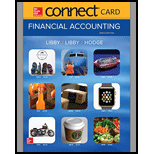
Concept explainers
Determining Financial Statement Effects of an Asset Acquisition and
During Year 1, Ashkar Company ordered a machine on January 1 at an invoice price of $21,000. On the date of delivery, January 2, the company paid $6,000 on the machine, with the balance on credit at 10 percent interest due in six months. On January 3,. it paid $1,000 for freight on the machine. On January 5, Ashkar paid installation costs relating to the machine amounting to $2,500. On July 1. the company paid the balance due on the machine plus the interest. On December 31 (the end of the accounting period), Ashkar recorded depreciation on the machine using the straight-line method with an estimated useful life of 10 years and an estimated residual value of $4,000.
Required (round all amounts to the nearest dollar):
- 1. Indicate the effects (accounts, amounts, and + or −) of each transaction (on January 1, 2, 3, and 5 and July 1) on the
accounting equation. Use the following schedule:
- 2. Compute the acquisition cost of the machine.
- 3. Compute the depreciation expense to be reported for Year 1.
- 4. What impact does the interest paid on the 10 percent note have on the cost of the machine? Under what circumstances can interest expense be included in acquisition cost?
- 5. What would be the net book value of the machine at the end of Year 2?
Want to see the full answer?
Check out a sample textbook solution
Chapter 8 Solutions
Connect Access Card for Financial Accounting
 College Accounting (Book Only): A Career ApproachAccountingISBN:9781337280570Author:Scott, Cathy J.Publisher:South-Western College Pub
College Accounting (Book Only): A Career ApproachAccountingISBN:9781337280570Author:Scott, Cathy J.Publisher:South-Western College Pub College Accounting, Chapters 1-27AccountingISBN:9781337794756Author:HEINTZ, James A.Publisher:Cengage Learning,
College Accounting, Chapters 1-27AccountingISBN:9781337794756Author:HEINTZ, James A.Publisher:Cengage Learning,


